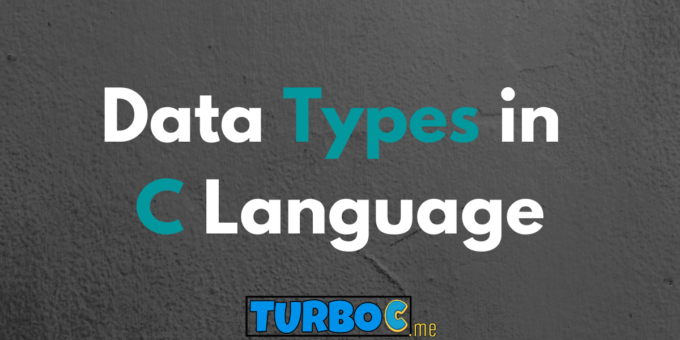Data types in c define how and what kind of data we can enter into our program. The C programming language includes a predefined collection of data types that we may utilize to manage various data forms. The storage capacity of these data types differs.
C Data Types Uses:
- When a variable is declared, determine its type.
- Determine the type of a function’s return value.
- Determine the type of parameter a function expects.
Fundamental Data Types in C:
The fundamental data types in the C programming language have the following data types.
- Primary data types in c
- Derived data types in c
1. Primary Data Types in C:
In C programming language usually, use these fundamental data types in C — int, char, float, and double – most of the time for the tiny programs.
Int Data Type:
A range of mathematical integers is represented by an integer data type in c. Integral data types in c can come in a variety of sizes, and they can contain negative values or not. A set of binary digits is widely used to represent integers in computers (bits). The number of integer sizes accessible varies depending on the size of the grouping and the programming language used.
Char Data Type:
Character data is stored in a fixed-length Character data is stored in a fixed-length field of the CHAR data type. Data can be a single-byte or multi-byte string containing letters, integers, and other characters supported by your database locale’s codeset.
The list below summarizes how the locale you select impacts the CHAR data type.
- A CHAR column’s size is determined by bytes, not characters.
- In a CHAR column, you can type single-byte or multi-byte characters.
- CHAR columns are sorted in code-set order rather than localized order by the database server.
- Always alter CHAR data in the CLIENT LOCALE of the client application within a client application.
Float Data Type:
A floating-point data type is a group of data types that behave similarly and differ only in their domain sizes (the allowable values). Number values with fractional parts are represented via the floating-point family of data types. A mantissa and an exponent are the two integer values that they are stored as. In all programming languages, the floating-point family has the same features and performs or reacts in the same way. They can always store negative or positive numbers; hence, they are always signed instead of the integer data type, which can be unsigned.
Double Data Type:
A double data type is a 64-bit IEEE 754 floating-point with double precision. The Floating-Point Types, Formats, and Values part of the Java Language Specification specifies its range of values, which is beyond the scope of this article. This data type is usually the default for decimal values. This data type should never be used for precise quantities, such as cash, as previously stated.
2. Derived data types in c:
Derived data types are data types that are derived from the fundamental data types. In the C programming language, derived data types include functions, arrays, pointers, and references.
An array, for example, is a derived data type since it comprises similar types of fundamental data types while also acting as a new data type in C.
Also Read: How Linear search in C Works
Function:
A function is a piece of code or a program segment that is designed to complete a specified purpose. A function is often designed to spare the user from having to write the same lines of code for the same input over and over again. All of the lines of code are combined into a single function that may be invoked from anywhere. Every C++ application includes a default function called main().
Arrays:
An array is a collection of elements that are kept in memory in a continuous manner. The purpose behind an array is to store several instances in a single variable.
Pointers:
Addresses are represented by pointers, which are symbolic representations of them. They allow programs to generate and modify dynamic data structures as well as imitate call-by-reference.
Reference:
When a variable is declared as a reference, it becomes a synonym for another variable. By including a ‘&’ in the declaration, a variable can be declared as a reference.
Conclusion:
We’ve gone through the data types in C, including basic and derived. All of the data types are useful in their own way and contribute to C’s robustness. To learn more about C and to clarify your notions, look at C tutorials and finest C books.
FAQs:
In C, What Does Data Type Mean?
Data types are described as the data storage format in which a variable can store data to perform a given action in the C programming language. Before using a variable in a program, data types are used to define it. Data types determine the size of variables, constants, and arrays.
What Is The Difference Between The Data Types Int, Char, Float, And Double?
A variable can store numeric values using the integer data type. The int data type has two, four, or eight bytes of storage. The amount of time it takes to complete a task varies depending on the CPU’s processor.
Only one character can be stored in a character data type variable. The character data type has a storage capacity of 1 byte.
A variable can store decimal values using the float data type. The float data type has a 4 GB storage capacity. This varies as well, depending on the CP’s processor.
The float data type, which permits up to 10 digits after the decimal, is similar to the double data type.

